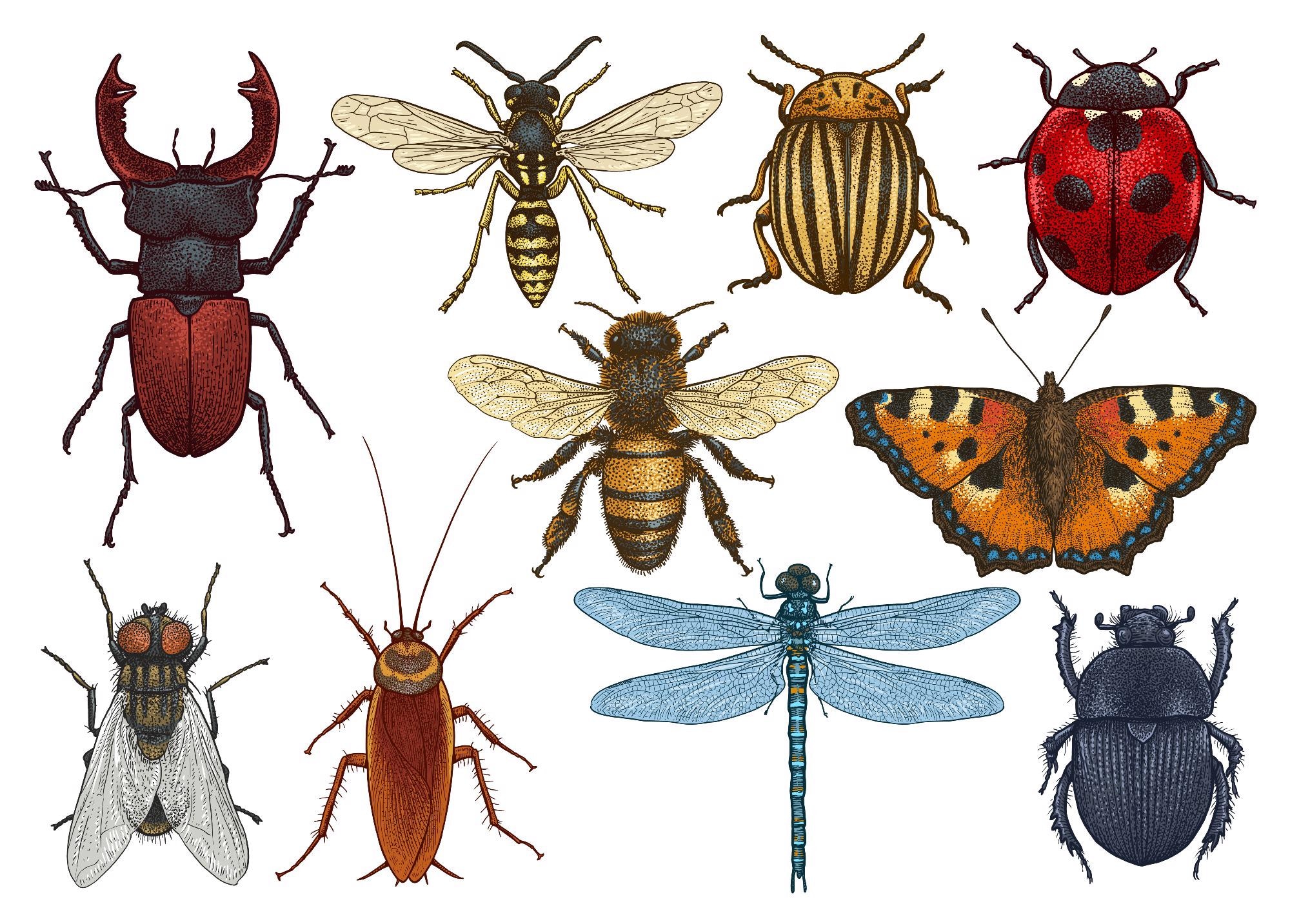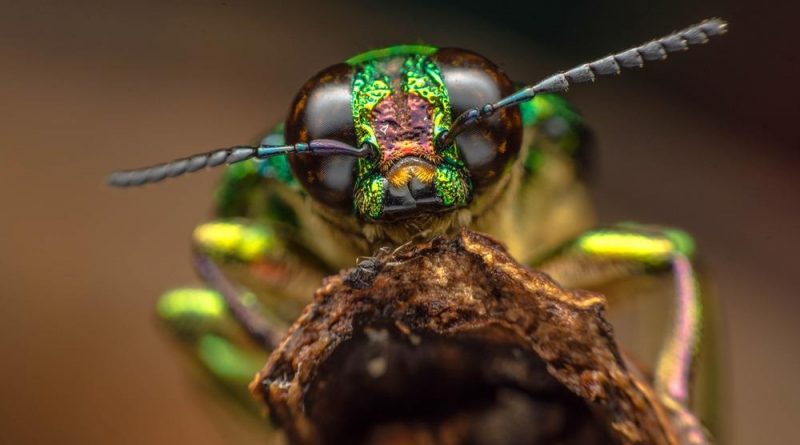How can Insects be Used to Study Physiology?
Insects outnumber humans, and indeed almost all animals, in the number of organisms belonging to this class. Scientists say they make up over 950,000 insect species, with about 25,000 being bees, 12,000 species of ants, and over 350,000 beetle species. When the number of individuals in each species is counted up, they far exceed the number and total mass of all other creatures.
Most insects are known for their nuisance value or danger, though some are accepted to be valuable, such as honeybees.

Image Credit: pitaksin/Shutterstock.com
Insects and Humans
Insects and humans are quite different in their morphology and anatomy but do have bodily processes that are very similar. This is partially explained by the fact that human and insect genes are often very similar in sequence and function – they are conserved, in other words.
Moreover, insects and humans have the most enzymes in common. The mechanism of operation of muscle and nerve cells in both classes of the organism also has a high degree of similarity.
The pattern of organization, by organ systems dedicated to one or a few functions, is also very similar in humans and insects, both of which need digestive, reproductive, muscular, and excretory systems. Both require food and oxygen, and both must eliminate wastes efficiently.
Skeletal muscle cells in insects and humans are identical in structure and function. Neurons in both classes are found to transmit electrical impulses, which spread from synapse to synapse via chemical signaling mediated by neurotransmitters. Insects also have strong sexual impulses, show typical attracting behavior to secure mates for themselves, and fight for territory.
Social insects are particularly fascinating as they specialize in their jobs, have armies to wage war and work in teams to accomplish seemingly impossible tasks.
The use of insects allows a quick estimate to be formed about the effects of different types of food, changes in ambient temperature, and other environmental conditions.
The fruit fly Drosophila melanogaster is an excellent candidate for the study of gene modifications, making it the archetypal genetic model organism. Others include the bee Apis mellifera, the silkworm Bombyx mori, the cockroach Periplaneta americana, and the locust Locusta migratoria.
These features of insects also allow them to be used as model organisms in uncovering the pathogenesis of human diseases and to examine drug toxicity.
Neuroendocrine System
The neuroendocrine system shows a basic similarity of structure, function, and development, as do insects and human hormones and neuropeptides. In humans, specialized neurosecretory cells (NSCs) are found in this system, comprising hormone-producing neurons.
These not only supply nerve centers in the brain to modulate neural circuits, but also project to the posterior pituitary gland that stores hormones produced in these cells, releasing them in response to specific feedback signals. Stimulatory hormones are also produced by some NSCs and are transported to the anterior pituitary gland to trigger the release of a specific pituitary hormone.
Insects lack a hypothalamic homolog but do have groups of NSCs in various regions. Some of these groups project to peripheral targets that resemble the human pituitary in having an anterior lobe to store neurohormones secreted by the NSCs, and a lateral lobe that has its own NSCs. Understanding these systems could help how neuroendocrine regulation works in larger animals, as well as the mechanism of disease in various disorders.
Insect neuropeptides that have the same structure, function, or sometimes origin are important in studies of animal feeding and energy regulation, for instance. These include homologs of vertebrate metabolic hormones like leptin, ghrelin, and cholecystokinin (CCK), or other neuropeptides such as neuropeptide Y or the orexins.
Cardiovascular Model
With cardiovascular disease being among the top killers in almost all regions of the world that have shown some industrial development, the underlying mechanism of disease is an important area of research. Beetles and other insects are key to such studies since they provide a convenient model for the heart and myocardium.
The peptide hormones, neuropeptides, and classical neurotransmitters are also often conserved, in part or the whole, between invertebrates and vertebrates. These could form candidates for drug discovery.
Immune System
Insects have innate immune systems with both cellular and humoral components. Pathogen recognition is fundamental to the activation of humoral immunity which in turn stimulates hemocyte activity.
These immune mechanisms are similar to those in vertebrates, and the components have vertebrate counterparts, from peripheral receptors to transcription factors, including immune regulators. Thus, insects are good models for studying the vertebrate immune response at the molecular level, and the results of its manipulation at the genetic level.
Aging
Aging is a biological process in which changes occur in the tissues and cells, observable at the molecular level, to affect the lifespan of an organism. Genetic and phenotypic similarities exist between aging in insects and larger animals, including vertebrates. However, disease states and lifestyle factors also play a role, which makes the relationship between them more complex.
For this reason, insects offer a useful model of aging mechanisms, with their conserved genes and simple structure, which helps discover changes in tissues and molecules with aging. Such research helped reveal that the resting heart rate in many insects goes down with age, as well as the cardiac response to stimulation and stress.
Heart rhythm abnormalities are also more common in older insects. Thus, insect heart preparations may serve as a good model for aging studies and drug development in this field.

Image Credit: Bodor Tivadar/Shutterstock.com
The Advantages
The small scale of insects has led to the adoption of advanced microscopy and X-ray imaging, along with micro-assays for the quantitative and qualitative analysis of insect chemicals and functions. Understanding how insect chemicals work in neural signaling and other processes can help understand how the same or similar signaling molecules operate in humans and animals.
The small size and short lifespan of insects reduce the cost of rearing them in the laboratory so that rapid studies can be carried out for later extrapolation to larger vertebrates. In fact, such neurobiological research in insects could be potentially useful in the treatment of obesity, metabolic syndrome, and cardiovascular disease in humans.
References:
- Harrison, J. et al. (2016). Insect and Human Biology. ASU – Ask A Biologist. Available at: https://askabiologist.asu.edu/insect-and-human-biology. Accessed on 27 September 27, 2021.
- Adamski, Z. et al. (2019). Beetles as Model Organisms in Physiological, Biomedical and Environmental Studies – A Review. Frontiers in Physiology. https://doi.org/10.3389/fphys.2019.00319. https://www.frontiersin.org/articles/10.3389/fphys.2019.00319/full
Last Updated: Jan 24, 2022

Written by
Dr. Liji Thomas
Dr. Liji Thomas is an OB-GYN, who graduated from the Government Medical College, University of Calicut, Kerala, in 2001. Liji practiced as a full-time consultant in obstetrics/gynecology in a private hospital for a few years following her graduation. She has counseled hundreds of patients facing issues from pregnancy-related problems and infertility, and has been in charge of over 2,000 deliveries, striving always to achieve a normal delivery rather than operative.
Source: Read Full Article



